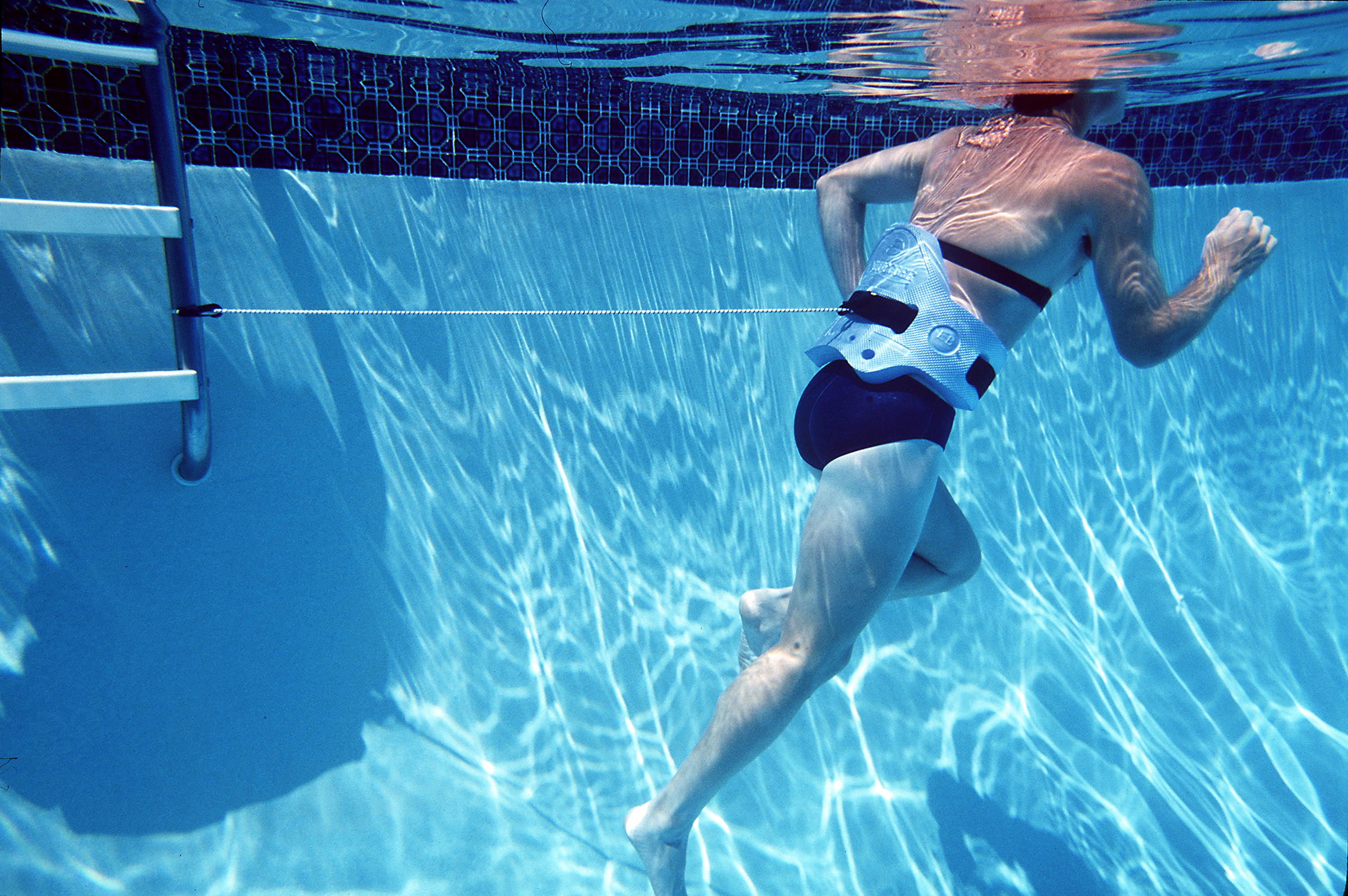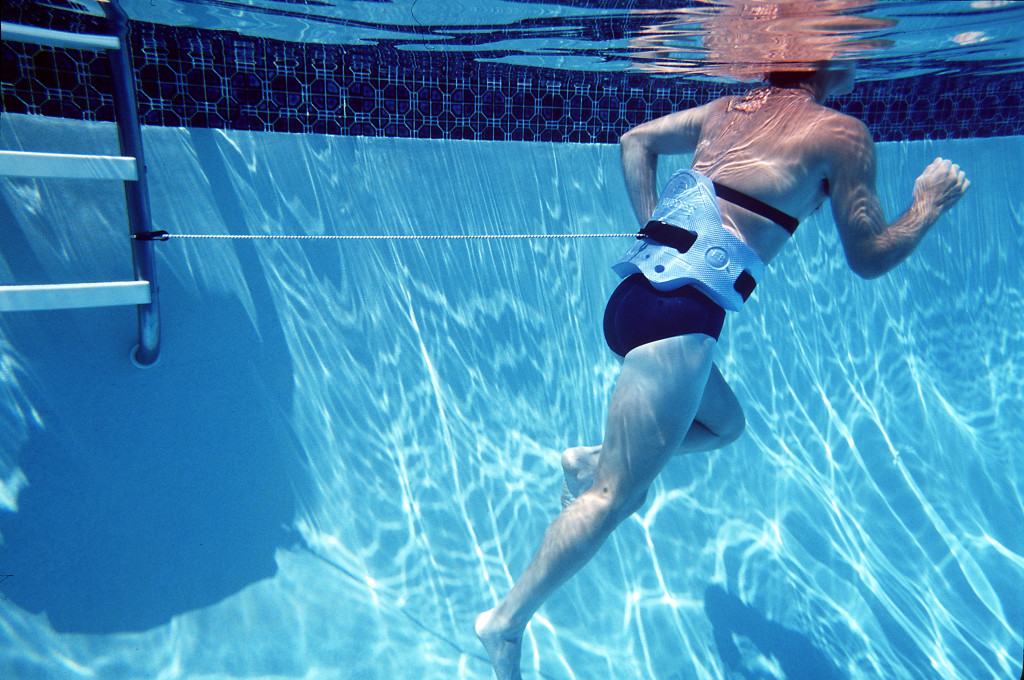Pool running

Hit the water for your next run
By Lindsey Craig
For someone who doesn’t like swimming, Canadian Olympic marathon runner Dylan Wykes is in the water a whole lot more than he ever thought he’d be.
The 30-year-old Vancouver resident, who holds Canada’s second fastest marathon time ever (2:10:47) and came 20th at the London 2012 Olympics, hits the pool a few times a week to do what he does best – run – with his winning strides submerged.
“I use pool running a lot as cross- training,” says the Kingston, Ont. native. “It’s a good break for the body. It doesn’t have the same impact as running but you still get a full cardio workout.”
Wykes first turned to pool running in university when plantar fasciitis set in. “At that time, I didn’t enjoy pool running very much,” he laughs. “I can’t swim very well, so the thought of going to a pool is just not very appealing to me. But I didn’t want to lose fitness.”
“I can push myself far more in the water than I could running on land.”
For those unfamiliar, pool running is exactly that – running – in deep water. The head is kept above the surface and one’s feet don’t touch the bottom. “You’re trying to mimic the motion of running,” says Wykes’s coach, Richard Lee, head coach of the B.C. Endurance Project.
Since pool running imitates running and involves the same muscles, it’s praised by runners as an excellent form of cardiovascular exercise that’s easy on the joints, and useful for injury recovery and prevention. Those dealing with stress fractures in the foot and leg, sciatica and injuries caused by the impact of running, such as Achilles tendonitis (Lee’s “nemesis”) and plantar fasciitis can benefit the most.
Calgary’s Terry Toffelmire knows firsthand. She began pool running once or twice a week after injuring her right Achilles tendon in 2005. “It definitely helped me get back to the start line healthy and uninjured,” says the 39-year-old, who more recently used pool running to help with plantar fasciitis and her left Achilles tendon.
Juli-Ann Sannuto, 45, is part of the Guelph Victors running group in Guelph, Ont. A summer 2012 sciatic nerve injury left her sidelined and “terrified” to run. Pool running, she says, changed all of that. Each session, a trainer would tether Sannuto from a pool buoy using a bungee cord fed through her flotation belt. She performed running drills in the pool for four and a half months as she recovered. “I can push myself far more in the water than I could running on land,” she says. “Just to feel I was running again was incredible.”
Despite all of the advantages, pool running presents a major challenge to those accustomed to changing scenery: boredom. “An hour of it can be mind-numbing,” Lee jokes, noting that intervals are key to staying focused.
For Tofflemire, the answer is in her swim cap. She fastens her iPod to the cap and listens to audiobooks as she trains. Wykes also turns to technology – blaring tunes from an underwater device for his iPod. “I listen to all sorts of things, from indie rock to electronic music,” he says.
The Olympian is no longer injured but pool runs 2 or 3 times a week, from 40 to 80 minutes each time, as part of his training regime. He’s happy he got his feet wet. “It took a little convincing but I’ve definitely felt the benefits.”
8 TIPS FOR POOL RUNNING
From Canadian Olympic runner Dylan Wykes and coach Richard Lee:
1 Make it part of your routine. “At first, don’t worry about time or intensity, just commit to it,” Wykes says.
2 Concentrate on form. Stay upright. Mimic running as much as possible.
3 Mix it up. Switch between steady tempo sessions and interval training. “I might do one minute hard, then one minute easy,” Wykes says. Lee adds,“It focuses your mind and time goes by a hundred times faster.”
4 Pool run after tough workouts. Wykes gets in the water the morning after an intense session of intervals on the track.
5 It’s not about distance, it’s about effort. “You can pool run in pretty much the same spot,” Lee says. “The goal is to raise your heart rate.”
6 Music motivates. Find devices you can use underwater or attach to your swim cap.
7 Pool run with friends. “It helps to pass time and makes it more fun,” Wykes says. Plus, pool running is also a great way for runners of different abilities to train together.
8 Take advantage of scenic spots. Wykes’s favourite summer “watering hole” is Vancouver’s 137 m oceanside pool at Kitsilano Beach. “It’s pretty easy to get out because it’s such a nice setting,”
he says.



